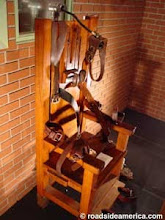that numbers that presented earlier about the numbers of each race that were killed would
definitely support that assumption. The question was though had this racial bias changed over time and was it a trend that was slowly declining based on the lessening of racial tensions in the state.[8] A majority of those sentenced to death row were less than the age of thirty, a minority male and most of the time divorced at the time of sentencing. Most of these offenders came from a non-rural background and eight of the offenders were under the age of eighteen when they committed the crimes they were convicted of. Only five of the sentences, were to those over the age of sixty. With the oldest sentenced at the age of sixty-five and executed at the age of sixty-seven. Many of those sentenced to death were unskilled workers who had trouble holding down any sort of job. Some were deemed illiterate with only a little more than twenty-five percent having received nine or more years of education.[9]

[6,7,8,9] Marquart, Ekland-Olsen, Sorensen,The Rope, The Chair, and The Needle: Capital Punishment in Texas, 1923-1990. 1st ed. Austin, TX: University of Texas Press, 1994

